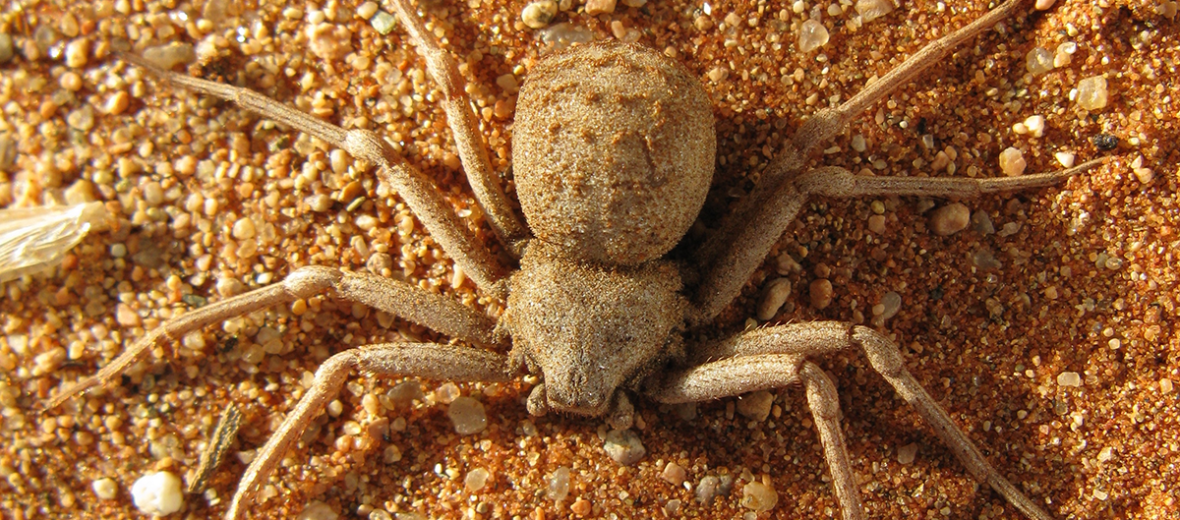
The 6-eyed sand spider is touted as being the most venomous spider in the world. The species in this article hails from Namibia and South Africa. They prefer sandy dunes. But they can also be found among rocky crevices and rubble. 1 thing is for sure, these arachnids like it hot and dry. These critters are not currently evaluated by the IUCN.
First the Stats…
Scientific name: Hexophthalma hahni
Length: Up to .6 inch, plus up to a 2 inch legspan
Lifespan: Up to 15 years
Now on to the Facts!
1.) Their closest relatives are the recluse spiders, such as the brown recluse.
2.) These critters are also known as the 6-eyed crab spider, due to their flattened bodies and elongated legs.
3.) There have been numerous species of 6-eyed sand spiders identified. But it is presumed there are many more, seeing as these spiders tend to stay hidden in the sand, they are therefor hard to discover and observe.
4.) Covered in tiny hairs, called setae, these hairs not only serve to hold sand particles to their body, but also in detecting minute vibrations of passing prey or predators.
5.) 6-eyed sand spiders tend to be shy and not terribly defensive. But they will bite, if threatened or mishandled.
But wait, there’s more on the 6-eyed sand spider!
6.) These critters do not spin webs, but rather bury themselves just under the sand and await passing prey.
7.) The venom of these arachnids has been studied as a possible use as a homeopathic medicine to treat various illnesses. But much testing is still needed.
Did you know…?
The bite from 1 of these spiders contains dermonecrotic venom, aka cryotoxin. This can cause immediate cell death (necrosis). This can lead to nearby organ tissue decay and necrotic lesions of the skin and organs that can reach up to 3.94 inches deep. Infection and even sepsis can occur as a result. Death is also possible.
8.) Envenomation from 6-eyed sand spiders also causes similar effects to the Ebola virus.
9.) These spiders prey on various insects and scorpions.
10.) The venom from a 6-eyed sand spider can kill its prey in seconds!
Now a Short 6-Eyed Sand Spider Video!
Be sure to share & comment below! Also, check out the Critter Science YouTube channel. Videos added regularly!
Want to suggest a critter for me to write about? Let me know here.



